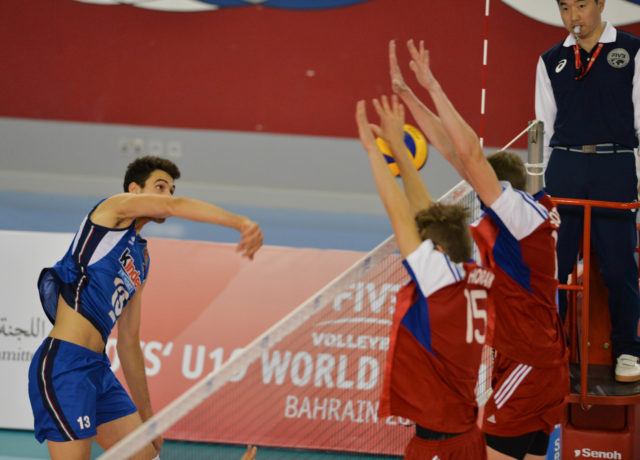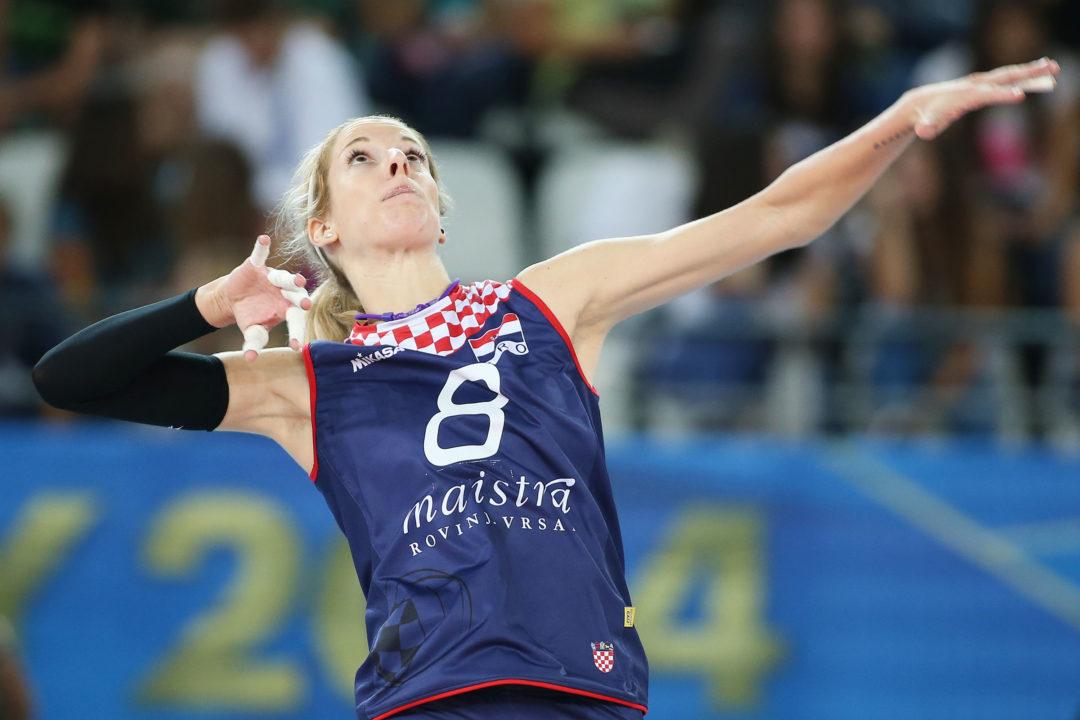In the volleyball world, there are handfuls of concepts that need to be taught, but there are endless ways to teach your players these skills or game-situations.
Often times, many coaches don’t agree with how to teach certain things because they have done it their way for so long, but sometimes there is a coach that is looking to mix up the boring ole passing or serve receive drills in place of something more game-like or competitive. While the basics have their place in volleyball, there are times to mix things up so your players are not growing into a rut and becoming bored with the same old practice routine.
Here are some of the most basic volleyball drills and how you can improve on them to make them suck a little less.
1. Pepper
One of the most common ways for a player to warm up their arms before practice or match is to pepper. For those of you who don’t know what this is – it’s two players passing, setting and hitting back and forth at each other while staying on the ground. See an example below from the St. Johns volleyball program:
While a timeless staple to the volleyball world, it can often run its course and become “boring” to some players. There are a few ways that you can mix this up or add a new element to make it more interesting or challenging.
- Add a third person – yes, it will essentially be the same drill, but it is a great way for your setters or any player to get more setting touches on the ball. Simply, a designated player will stand in the middle of the pepper and serve as only the setter in the equation, while the other two are passing/digging or hitting the ball. This, along with normal pepper teaches control while offering up more touches in certain positions for players.
- Controlled pepper – this drill requires six players on each side of the court. You will essentially be scrimmaging each other but the emphasis on this drill is control. You don’t want to go up and take a big swing and crush the ball during controlled pepper, you want to keep a rally going and work on off-speed shots. This teaches control on the ball and how to work through a longer type rally.
2. Serve Receive
Probably second behind serving itself is the importance of a pass. If you cannot pass the ball, your team will not be very successful on the court. While you can work on this during a scrimmage or just throw out three players and have others serve at them, it could become a boring drill for players to participate in. There are a number of ways that you can break up serve receive to add some flare to it.
- 3 minute serve receive – this is a drill that can be used at any level of play and any skill set. Basically, you set your timer to 3 minutes and have either two or three passers ready to serve receive along with servers. All players will rotate throughout the drill – once you pass you go serve and after you serve you fill in to pass. You are trying to get as many “perfect passes” to the setter in three minutes as you can. Once you complete the drill once and tally your perfect passes, you will repeat and try to beat your previous score (and you can continue to do this for as long as you see fit for your team). This shows the urgency and calmness that you need to show on the court – urgency through having to get a pass in a certain amount of time and calmness by not letting this factor deter your passing.
- Serving competition – With this drill you have 30 serves to get 15 perfect passes to your setter. While being another urgent serve receive drill it also teaches the serves to serve aggressively, because they are trying to not let the passers get to 15. If the serve is missed it counts towards the passers.
3. Blocking
It is often difficult to teach blocking fundamentals without it being one of the most boring drills you could image – repeating the footwork on the net over and over and over and over.
- Push and swipe drill – In this drill, you will have two or three people on boxes at the net holding volleyballs, while you have three blockers plus people to fill in on the other side of the net. The people on the boxes hold the ball at a location that would be similar to a hit. From here, the blockers will do their blocking footwork to the “hit”, push over the net and try to knock the ball out of the person’s hands. This teaches blockers to push over the net, to stay out of the net and be aggressive when a “joust” situation occurs. (Jousting is when the ball is in the plane of the net, both teams are allowed to play the ball and can result in both players attempting to block the ball back onto the other side.”

The Czech Republic puts up a strong block against Italy’s Daniele Laviais. Courtesy of FIVB
- Another drill would be to have people on boxes once again, with blockers and defenders on the opposite side. The person will slap the ball, which will prompt the middle blocker to move to that box to block, the person will attack the ball and the blockers will try to get a touch on the ball or block it. This also works with defense, as the blockers will not always block or touch the attack, allowing for defenders to learn how to play around the block.
4. Scrimmage
Scrimmaging is the part of practice that every player looks forward to because it’s game-like and competitive. Though, their favorite part, it can often be too slow and become boring for some players – especially playing against the same opponents every day. You can make your scrimmage section of practice more upbeat and fast through a few drills:
- Bingo Bango Bongo – This drill requires six vs. six on the court. The goal of the game is to obtain three BIG points by earning three SMALL points – you need three small points to earn one big point. Example – if Team A gets the first point they will yell “Bingo” to signify they obtained the first point, by which they will receive another ball (however the coach wants to administer it). If Team A gets the second point (in a row) they will tell “Bango” to get the BIG point they will have to score the third point in a row and yell “Bongo”. If Team B stops Team A at any point before they obtain the BIG point they earn Bingo and continue to fight for the BIG point. This continues this way until one team gets three BIG points.
- 2-minute drill – Here you will be 6 vs. 6 and go for a total of two minutes. The drill starts with a serve and continues until a team scores a point or someone makes a mistake – to which, the team that got scored on will be thrown a ball to where the play ended or the person that committed the error will be thrown a ball to play. The point is to keep players focused and ready to keep playing and to capitalize on a mistake that they just made.
If you have any other drills that we did not mention that would make the typical, boring volleyball drill even better let us know in the comments section below!

Leave a Reply